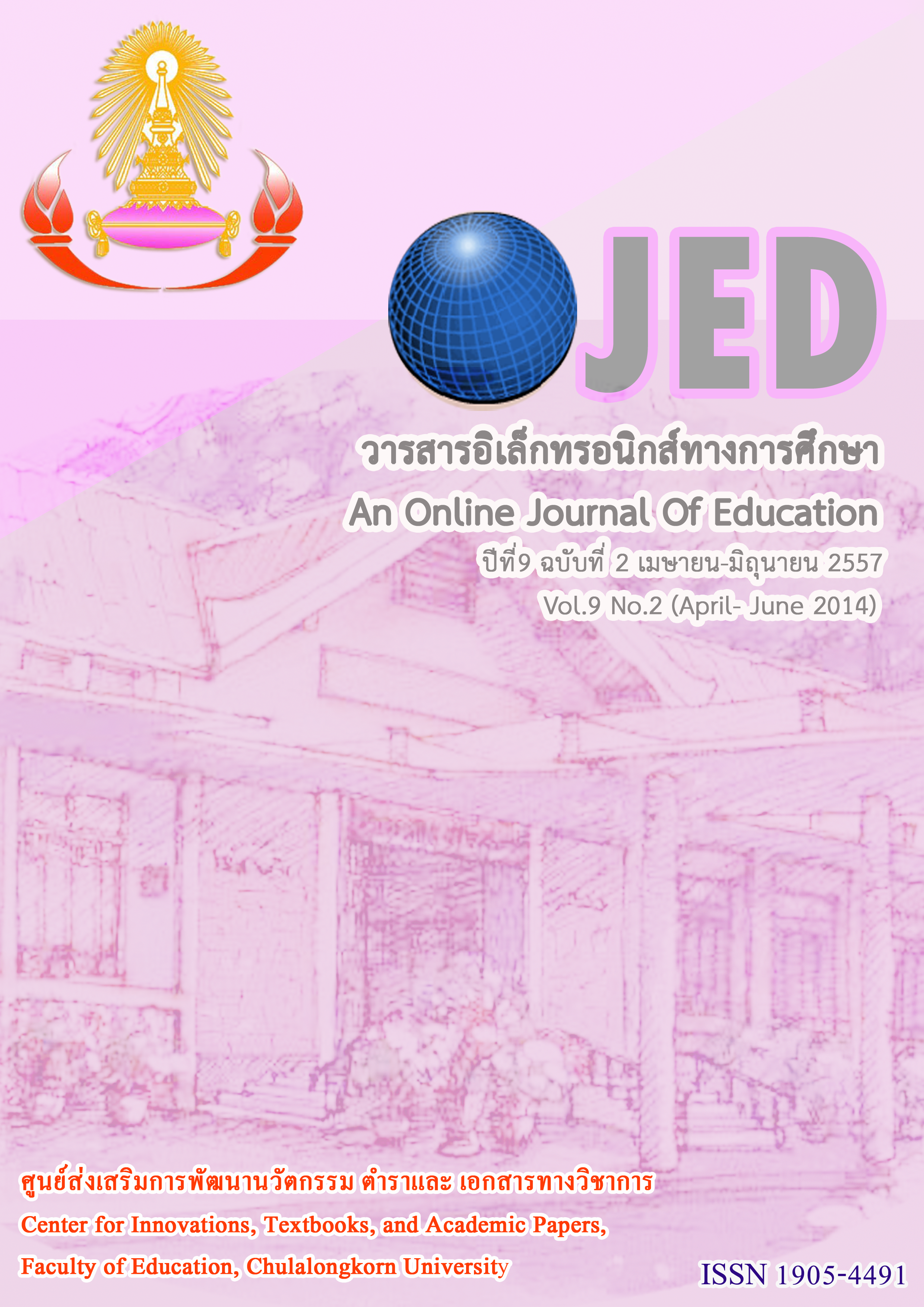แนวทางการจัดการเรียนรู้พลศึกษาสาหรับเด็กที่มีความต้องการพิเศษ: กรณีศึกษาโรงเรียนศึกษาสงเคราะห์
Keywords:
พลศึกษา, การจัดการเรียนรู้วิชาพลศึกษา, โรงเรียนศึกษาสงเคราะห์, PHYSICAL EDUCATION, PHYSICAL EDUCATION LEARNING MANAGEMENT, WELFARE EDUCATION SCHOOLAbstract
บทคัดย่อ
การวิจัยครั้งนี้มีวัตถุประสงค์ 1) เพื่อศึกษาสภาพปัญหาและความต้องการจำเป็นในการจัดการเรียนรู้พลศึกษาในโรงเรียนศึกษาสงเคราะห์ 2) เพื่อเปรียบเทียบความคิดเห็นระหว่างหัวหน้ากลุ่มสาระการเรียนรู้สุขศึกษาและพลศึกษา กับครูพลศึกษาเกี่ยวกับสภาพปัญหาการจัดการเรียนรู้พลศึกษา 3) เพื่อนาเสนอแนวทางการจัดการเรียนรู้พลศึกษาของโรงเรียนศึกษาสงเคราะห์ โดยเป็นการวิจัยแบบผสมผสาน คือ เชิงปริมาณ เครื่องมือวิจัยเป็นแบบสอบถามความคิดเห็น กับหัวหน้ากลุ่มสาระการเรียนรู้สุขศึกษาและพลศึกษา ในโรงเรียนศึกษาสงเคราะห์ทั่วประเทศ 50 โรงเรียนๆ ละ 1 คน และครู พลศึกษา 100 คน โรงเรียนละ 2 คน แบบสอบถามได้รับคืนกลับมาร้อยละ 92 จากทั้งหมด 150 ฉบับ เชิงคุณภาพเป็น การสัมภาษณ์ หัวหน้ากลุ่มสาระการเรียนรู้สุขศึกษาและพลศึกษา 5 คน และครูพลศึกษา 5 คน รวม 10 คน จาก 5 ภูมิภาค เครื่องมือการวิจัยได้รับการตรวจสอบค่าความตรง IOC ที่ระดับ .96 และความเที่ยงครอนบาคแอลฟาที่ .98
ผลการวิจัยพบว่า 1) การจัดการเรียนรู้พลศึกษาในโรงเรียนศึกษาสงเคราะห์ประกอบด้วย 3 ด้าน คือ ด้านสถานศึกษา ด้านครูพลศึกษา ด้านผู้เรียน สภาพปัญหาโดยภาพรวมพบว่า มีสภาพปัญหาอยู่ในระดับน้อย ขณะที่ความต้องการจำเป็นในทุกด้านอยู่ในระดับมาก เมื่อพิจารณาเป็นรายด้านพบว่า สภาพปัญหาด้านสถานศึกษา พบว่าอยู่ในระดับมาก 2) การเปรียบเทียบความคิดเห็นระหว่างหัวหน้ากลุ่มสาระการเรียนรู้สุขศึกษาและพลศึกษา กับครูพลศึกษาเกี่ยวกับสภาพปัญหาการจัดการเรียนรู้พลศึกษา พบว่า ทั้งภาพรวมและรายด้าน ไม่แตกต่างกันอย่างมีนัยสาคัญทางสถิติ ที่ระดับ .05 3) แนวทางการจัดการเรียนรู้พลศึกษา ด้านสถานศึกษา ควรมีการจัดสรรงบประมาณให้เพียงพอในการจัด สิ่งอานวยความสะดวกและสื่อการเรียนรู้ ด้านครูพลศึกษา ควรมีการจัดอบรมครูพลศึกษาในเรื่องของกระบวนการจัด การเรียนรู้ ด้านผู้เรียน ควรให้ผู้เรียนมีส่วนร่วมในการจัดการเรียนรู้พลศึกษา และเน้นให้ผู้เรียนเป็นศูนย์กลาง
คำสำคัญ: พลศึกษา/การจัดการเรียนรู้วิชาพลศึกษา/โรงเรียนศึกษาสงเคราะห์
Abstract
The purposes of this research were: 1) to study state problems and needs in physical education learning management at Welfare Education Schools; 2) to compare the opinions related to state problems in physical education learning management between the head department of Health and Physical Education Learning Area and the physical education teachers; 3) to propose the learning management guidelines of physical education in Welfare Education Schools. This study was a mixed method research. The instrument in quantitative methodology used a questionnaire to investigate the opinions of each head department from all the 50 Welfare Education Schools in Thailand and 100 physical education teachers – two from each school. 92% from 150 questionnaires were returned. The qualitative method utilized was interviews with five of the heads of department and five physical education teachers with the total of 10 from five regions. The research instruments were valid (IOC = .96) and reliable (Cronbach = .98). The results were as follows: 1) the physical education learning management in the schools comprised three aspects: the schools, the teachers and the learners. The overall state problems were at least level while the overall needs were at a high level. For each aspect, it was found that state problems in schools was at the high level while all aspects of needs were at the high level; 2) the comparison of the opinions between the head department and the teachers showed no significant differences in all aspects at the .05 level; 3) the guidelines of physical education learning management found that the school should provide adequate budget for managing the learning facilities and medias, the teachers should provide teacher training in the teaching process, and learners should encourage learners to participate in learning management and focus on a learner-centered learning style.
KEYWORDS: PHYSICAL EDUCATION/PHYSICAL EDUCATION LEARNING MANAGEMENT/WELFARE EDUCATION SCHOOL




